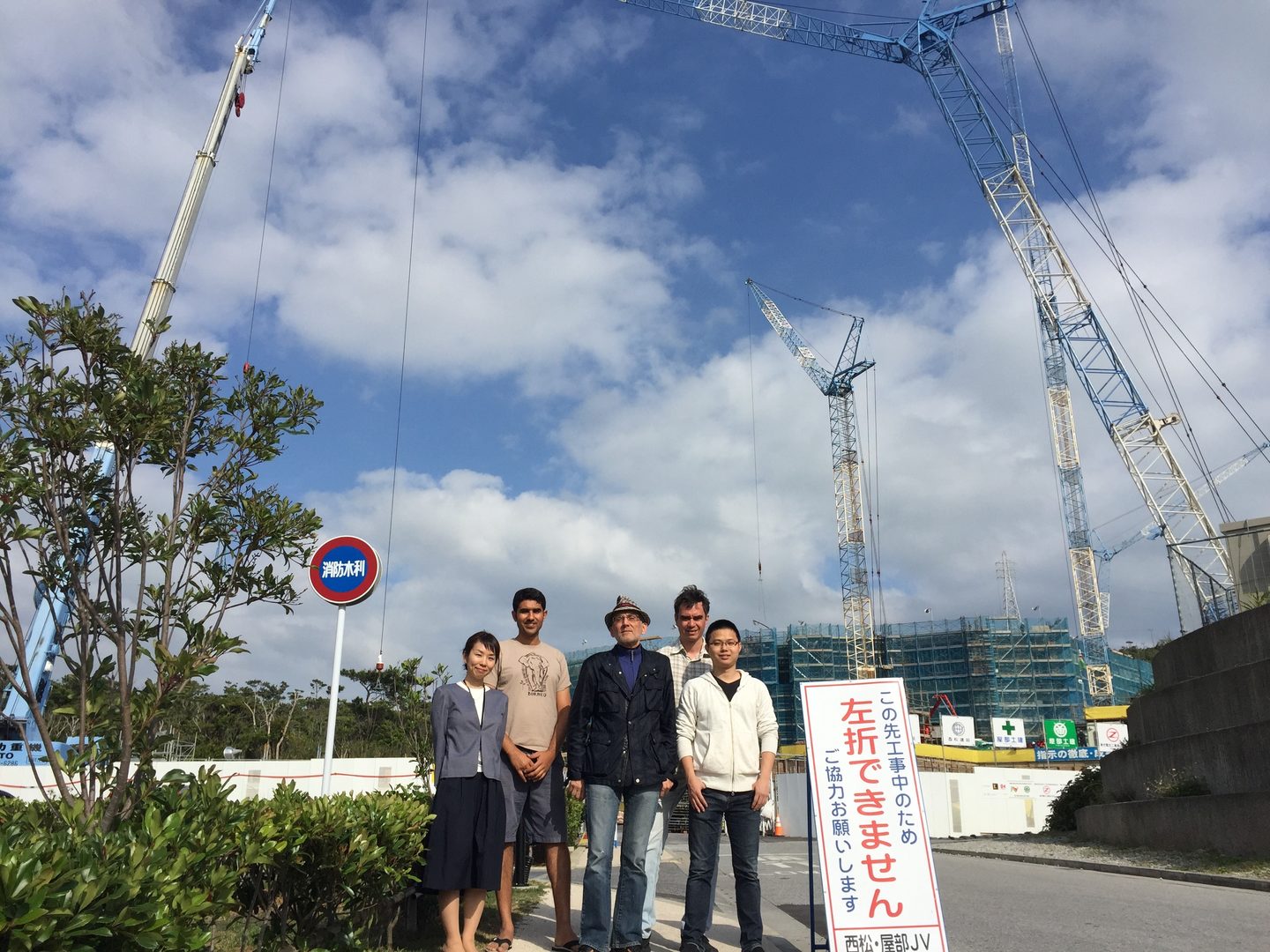FY2018 Annual Report
Continuum Physics Unit
Professor Gustavo Gioia

Abstract
The Continuum Physics Unit pursed theoretical and experimental research on turblent flows and tropical cyclones and granular materials, and continued to develop a joint fluid mechanics--continuum fluidics laboratory at OIST.
1. Staff
- Gustavo Gioia, Professor
- Tapan Sabuwala, Research Specialist
- Dongrong Zhang, PhD Student
- Tomoe Owan, Research Unit Administrator
2. Collaborations
2.1 The spectral link in turbulent flows
- Type of collaboration: Scientific collaboration
- Researchers:
- Professor Pinaki Chakraborty, OIST
2.2 Granular cratering
- Type of collaboration: Scientific collaboration
- Researchers:
- Professor Pinaki Chakraborty, OIST
2.3 Experiments on turbulent pipe flows
- Type of collaboration: Scientific collaboration
- Researchers:
- Professor Pinaki Chakraborty, OIST
- Professor Jun Sakakibara, Meiji University, Japan
2.4 Experiments on Taylor-Couette flows
- Type of collaboration: Scientific collaboration
- Researchers:
- Dr. Yasuo Higashi, OIST
- Professor Pinaki Chakraborty, OIST
3. Activities and Findings
The origin of ejecta rays in granular impact cratering
- This project is a continuation of previous experimental and computational work in which the formation of ejecta rays (of a type prominent in most craters on Moon and Mercury, for example) was found to be caused by irregular surface topography, a factor that had been ignored in empirical studies of impact cratering. The aim of the present project is to elucidate the physical mechanisms whereby the rays are actually formed at the contact between the impactor and the granular bed.
Asymptotic scaling in 3D and 2D rough-walled turbulent flows
-This project involves the empirical verification of the predictions of the spectral theory of turbulent fluid friction in rough-walled flows. These are predictions of the the asymptotic (i.e. high Reynolds number) relation between fluid friction (denoted f) and roughness lengthscale (denoted r), or f--r relation. According to the spectral theory, the f--r relation is set by the spectral exponent alpha (i.e. the exponent of the turbulent energy spectrum, which represents the internal fabric of turbulence), which in turn depends on the dimensionality of the flow (being alpha=5/3 in 3D and alpha=3 in 2D). Thus the spectral theory predicts that the f--r relation in 2D should be distinct from the corresponding f--r relation in 2D, contrary to the classical theory of turbulent friction, which ignored the spectrum and is thus constitutionally incapable of predicting what kind of difference, if any, should be expected between the f--r relation in 2D and 3D. To verify the predictions of the spectral theory, we are carrying out unprecedented measurements in turbulent soap-film flows in collaboration with researchers at the University of Bordeaux, France.
Kolmogorovian turbulence in transitional flows
-This project seeks to verify, by means of extensive experiments and computations, a conjecture which has been suggested to us by our work on the fluid friction exhibited by the non-laminar phase in transitional pipe flows, namely that the fundamental structure of that phase is Kolmogorovian. In other words, our conjecture is that the statistics of the turbulent fluctuations in the non-laminar phase of transitional pipe flows are in keeping with Kolmogorov's small-scale universality, a canonical feature of fully developed turbulent flows.
4. Publications
4.1 Journals
- 1. Sabuwala, T., Butcher, C., Gioia, G., Chakraborty, P. (2018) Ray Systems in Granular Cratering. PHYSICAL REVIEW LETTERS, vol. 120, 264501-1 to 264501-5, DOI: https://doi.org/10.1103/PhysRevLett.120.264501
4.2 Books and other one-time publications
Nothing to report
4.3 Oral and Poster Presentations
1. Zhang, D., Spectral theory of thermally stratified turbulent flows, University of South China, Hengyang, China, June 27 (2018)
2. Gioia, G., Cerbus, R., Liu, C., Chakraborty, P. Kolmogorovian turbulence in transitional pipe flows, Kyoto University, Kyoto, Japan, July 19 (2018)
3. Cerbus, R., Li, L., Sakakibara, J., Gioia, G., Chakraborty, P., Slug flows in transitional pipes, Kyoto University, Kyoto, Japan, July 19 (2018)
4. Sabuwala, T., Powell, W. Ray systems in granular cratering, Granular Matter Gordon Research Conference, Stonehill College in Easton, MA, USA, July 24 (2018)
5. Zhang, D., Spectral theory of thermally stratified turbulent plane Couette flows, Jiangsu University of science and Technology, Zhenjiang, China, September 14 (2018)
6. Zhang, D., Spectral theory of thermally stratified turbulent plane Couette flows, Northwestern Polytechnical University, Xi’an, China, September 18 (2018)
7. Gioia, G., Highlights of twenty years of research in mechanics, Politecnico di Torino, Italy, February 19 (2019)
8. Gioia, G., Cerbus, R., Liu, C., Chakraborty, P., Kolmogorovian turbulence in transitional pipe flows, École Polytechnique Fédérale de Lausanne, Lausanne, Switzerland, February 28 (2019)
9. Gioia, G., Cerbus, R., Liu, C., Chakraborty, P., Kolmogorovian turbulence in transitional pipe flows, University of Buenos Aires, Argentina, March 6 (2019)
10. Gioia, G., Cerbus, R., Liu, C., Chakraborty, P., Kolmogorovian turbulence in transitional pipe flows, Pontifical Catholic University of Chile, Santiago, Chile, March 14 (2019)
11. Gioia, G., Bombardelli, F., Chakraborty, P., A physical explanation of the Moody diagram for the friction factor in turbulent pipe flows, Pontifical Catholic University of Chile, Santiago, Chile, March 14 (2019)
Video Poster
Sabuwala, T., Butcher, C., Gioia, G., Chakraborty, P., V0043: Ray Systems in Granular Cratering, American Physical Society Division of Fluid Dynamics Meeting 2018, Atlanta, Georgia, USA, November 18-20 (2018),
DOI: https://doi.org/10.1103/APS.DFD.2018.GFM.V0043
5. Intellectual Property Rights and Other Specific Achievements
Nothing to report
6. Meetings and Events
Nothing to report
7. Other
Nothing to report.



